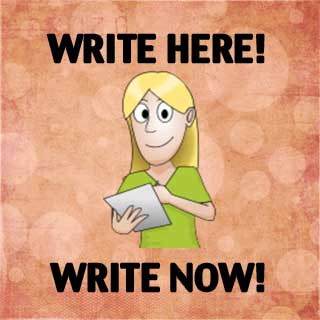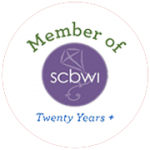I used to be one of those people who was convinced I needed a big block of time—at least two hours—before I could really write, especially when I was working on a novel because it seemed like I needed at least thirty minutes to remind myself where I was in the story and then it always took awhile to get in my groove. So, more often than not, I found myself not writing at all because I didn’t have that block of time.
Today, I still love the luxury of having a block of time and I’m lucky enough to have it quite often, but on the days when I don’t, I still want to write and am learning how to use smaller blocks to my advantage.
Here are some of things I do when I only have 10-20 minutes of time, no matter where I am.
For picture books
- Work-in-progress. If I’m working on revisions for a picture book, ten minutes is often just enough time to identify trouble spots and/or rewrite a bit from inspiration or feedback.
- First draft-in-progress. Because I’m writing more commercially-oriented stories, they are quite short (usually under 600 words). I find I can actually jump into a partial draft and keep going. It takes only a couple of minutes to read what I’ve already written and then I can pick up where I left off.
- Brand new story. If I’m casting about for a new story, I do one of two things lately. First, since I participated in PiBoIdMo in November 2014, I go through my ideas, noticing which ones give me pause, make me wonder, or spark something and when I hit on one, I circle it in one color. Once I’ve gone through them all, I go back to the circled ones and try to narrow it down. This process alone is a fun and productive way to spend that 10-20 minutes. Second, I’ll just brainstorm. Usually I think of a young child I know or have seen and jot things I know are important to him/her. Often a story begins to emerge. I also read picture books to see what’s been done and if any light me up with a new idea.
For novels
- Work-in-progress. If I only have 10-20 minutes, I usually think of the next scene I want to work on or subtext/backstory that’s important to the scene and ask myself (a) What is the scene about?/What are we reading to find out? and (b) Why is this scene pivotal/important to the story as a whole? Answering those questions helps me focus the scene and get excited about working on it.
- First draft-in-progress. This is harder because I’ve been working on FADE AWAY off and on for four years now—eek! But I can use the quasi-fantasy novel as an example since it’s probably the next book I will write. What I’ve been doing is jotting notes on a character or scene, adding research to the Scrivener doc, and thinking more about the ending. I like to have a sense of where I’m going before I start writing, even if it changes later.
- Brand new novel. I have at least four novel ideas that I’m interested in writing after the quasi-fantasy, so coming up with a new idea isn’t on my radar. However, if I needed to, I’d probably start brainstorming, again using middle grade and teen kids I know or books for them to see what comes up. I’d also think back to when I was that age and what was important on a more universal level—friendships, crushes, jealousy, lack of self-esteem, uncertainty about where I fit in, and more. Brainstorm!
What about you?




